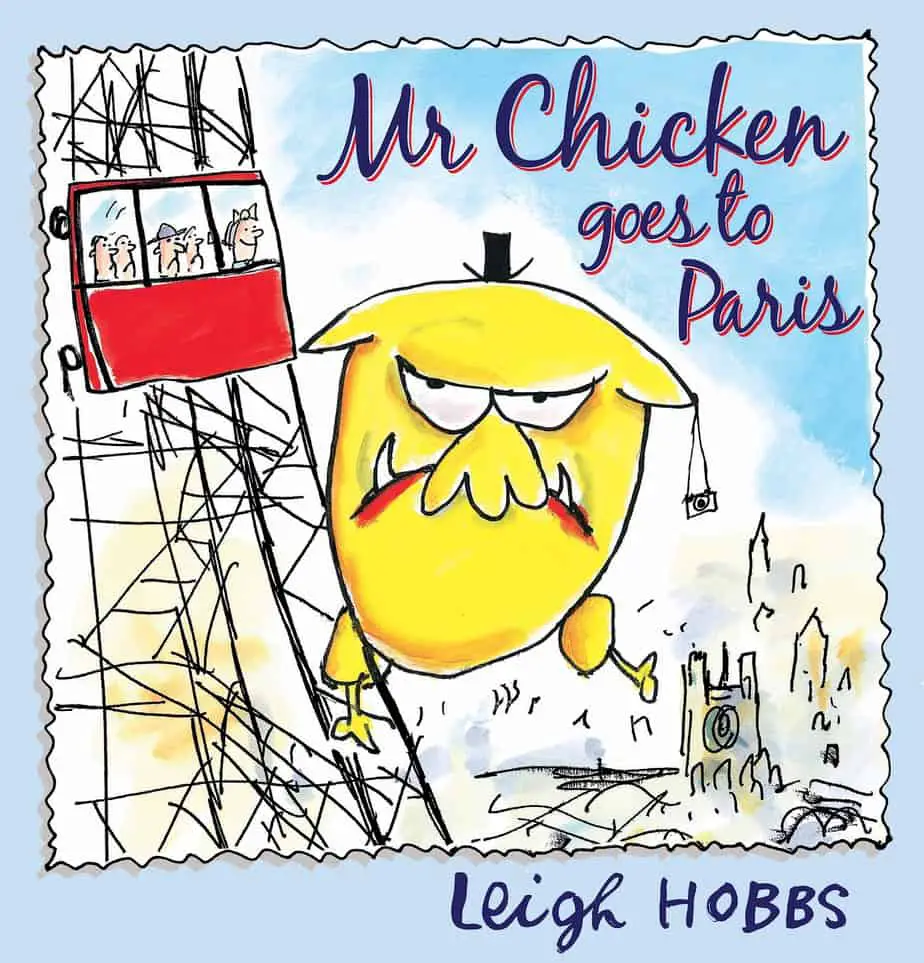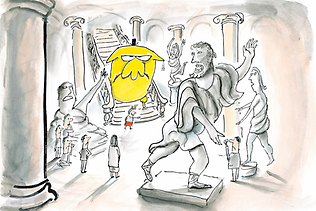Mr Chicken Goes To Paris is a carnivalesque picture book about a chicken who goes to Paris on holiday.
For a whiff of the Foreign, film makers often turn to France and especially Paris. The same is true in children’s films, from “Ratatouille” to “Hunchback of Notre Dame.” And the same is true in children’s books.
Jerry Griswold, Paris in Children’s Books
STORY OF CHICKEN GOES TO PARIS
Not a high concept book — indeed, a chicken goes to Paris. For a holiday. It’s what it says on the tin. This is a third-person version of someone’s summary of a trip, of the kind it’s possible to get quite bored of, unless, of course, the holiday maker happens to be an enormous chicken. A reader’s enjoyment of this story will depend on how funny they think huge chickens are.
There is no real story to this poultry’s holiday and each page jumps to one of Paris’ famous tourist attractions.
– 3 Star Goodreads Review
I’m approximately 30 years older than the target audience, I thought this was rather adorable.
– 4 Star Goodreads Review
WONDERFULNESS
The main drawcard of this story is the disproportionate size of the chicken, who grows larger and larger as the story progresses. Ostensibly, this is because Monsieur Poulet eats too much delicious French food. As a side note, my only criticism of this book is that it is suggested Mr Poulet go on a diet. I’m no fan of mentions of dieting in children’s books because of the huge pressure on young people (especially on girls) to look slim. The story would have worked without that, as in Avocado Baby, an old book I remember from childhood, in which food is seen as nourishing, and can be used to bulk a picture book character up to a ridiculous extent nonetheless.
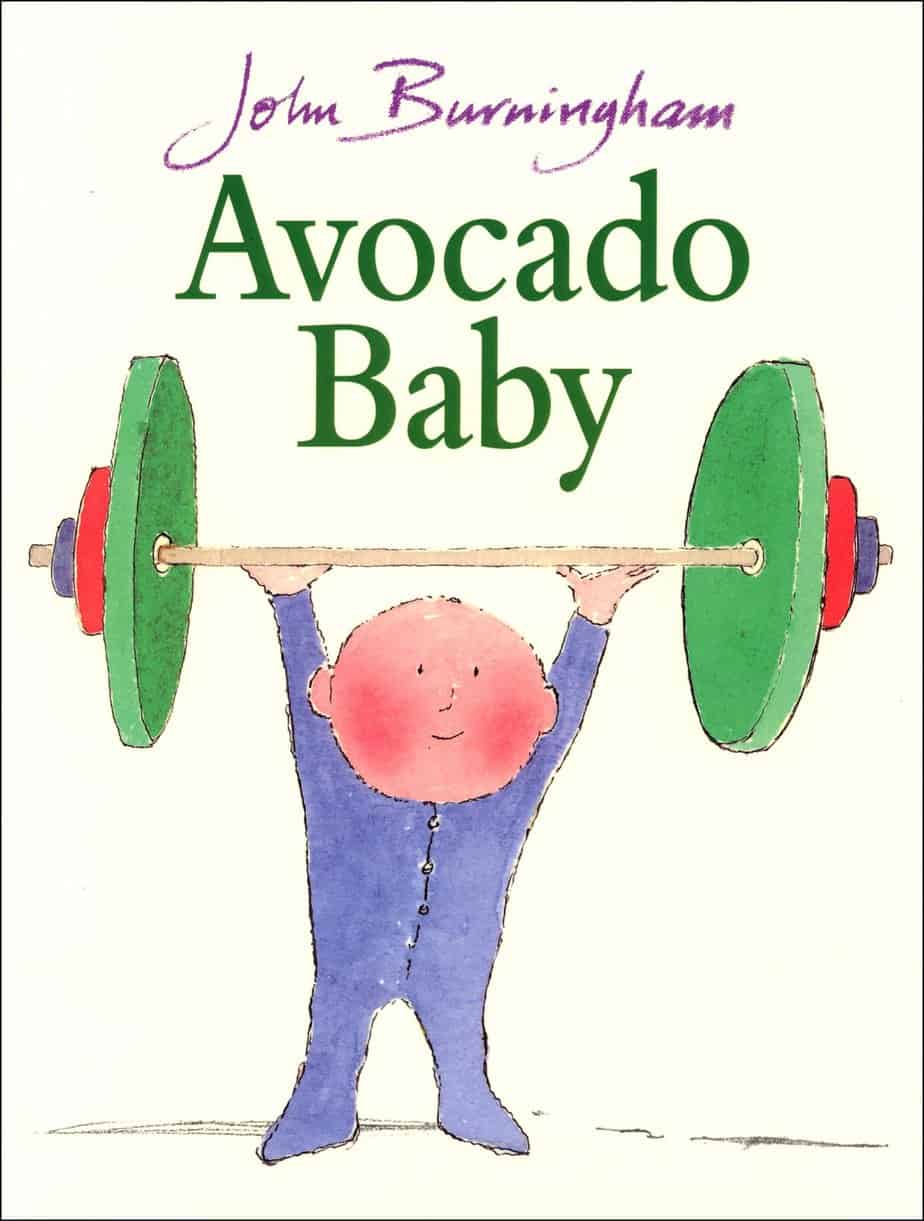
Here is Mr Chicken on a plane:
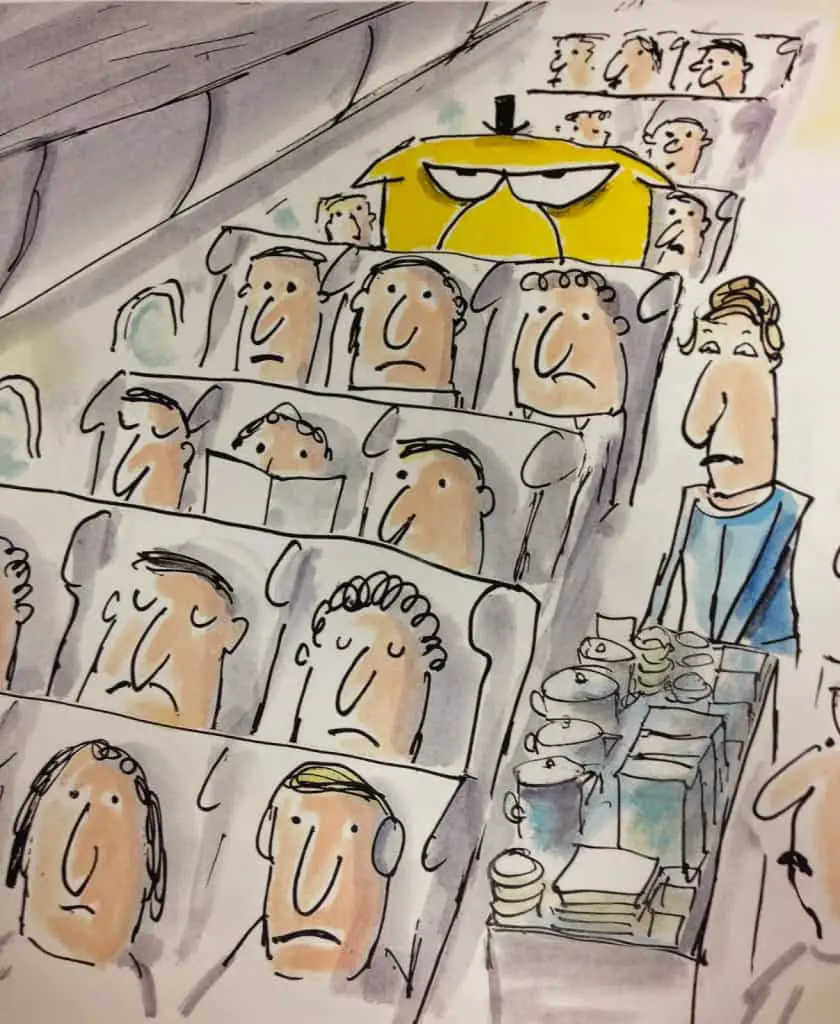
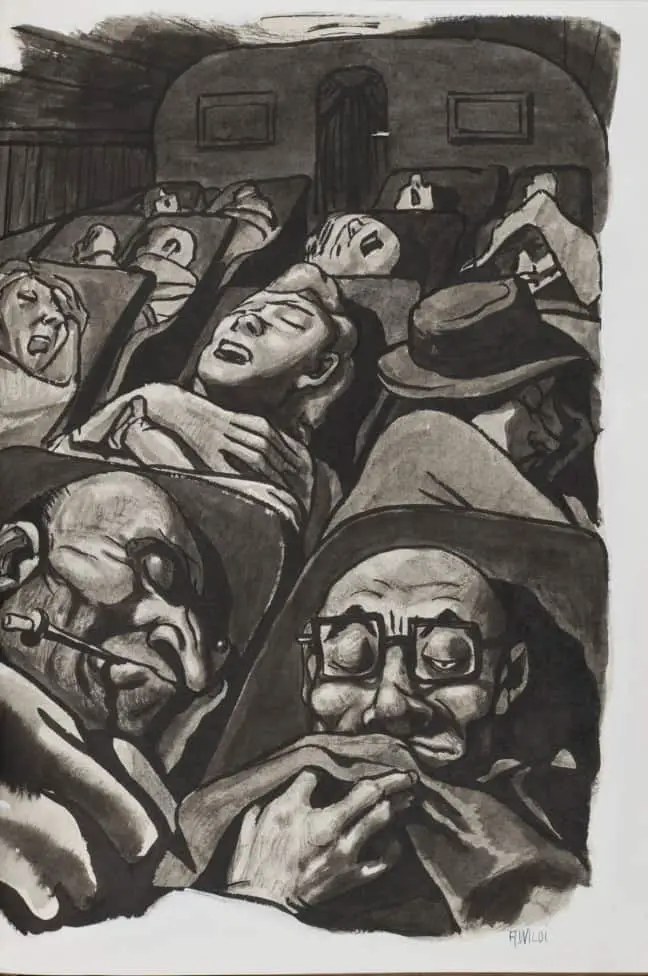
Someone pointed out on Goodreads that Mr Chicken looks more like an alien than a chicken, and I hadn’t considered until then that this is probably intended. Mr Chicken is indeed an ‘alien’ in Paris, in the foreigner sense, and this books becomes a metaphor for not fitting in because you look different. As someone who lived for a year in a tiny Japanese village where the only other white person was the French guy who owned a restaurant, I can tell you that being a significant minority really does impact the way you experience life. And everyone should ideally experience that once. If that’s not possible, there are always books.
Notice the use of colour (or lack of it) in the illustration above. Mr Chicken is conspicuous not just because of his size (and because he is a chicken) but because he suddenly feels bright yellow, emphasised by the unsaturated sepia tones all around him. You’ll notice the bystanders looking with fright and surprise at Mr Chicken, though the comedy happens when none of them do a thing. Indeed, when Mr Chicken asks someone to take his photo, the someone politely agrees, as if seeing an enormous talking chicken is an everyday event.
The interesting thing about this is that children are often required, when reading picture books, especially, to believe that talking, house-dwelling animals are a thing, or at least, a stand-in for humans. This book isn’t quite like that. The reader is required to understand that a giant talking chicken in Paris is an unusual thing, even in the fantastical world of a picture book. Indeed, unless the reader gets this joke, the book is just another talking animal story.
This is exactly why an understated text is the perfect choice. If you were to read the text without the pictures, you’d find that it’s rather boring. The contrast between The Everyday of the text and The Fantasy of the illustrations creates a pleasant irony, and allows the story to work as a comment on difference.
I know educators are always looking to link picture books in with the curriculum, and this book includes a number of French words which would be useful in a primary school or beginner high school French program. (There’s a list of the words with their meanings on the front endpapers.)
This book would be a useful cross-curricular resource if themes such as Paris, France, tourism, foreign language, etc. were on the agenda.
3 Star Goodreads Review
NOTES ON THE ILLUSTRATION
It would be easy to think that these scampy looking illustrations don’t require much in the way of skill, but I can assure you it’s as difficult to produce something sketchy and full of movement as it is to produce something more photorealistic. These illustrations are in the style of Quentin Blake or Ronald Searle.
[Searle’s] work has had a great deal of influence, particularly on American cartoonists, including Pat Oliphant, Matt Groening, Hilary Knight, and the animators of Disney’s 101 Dalmatians.
He was an early influence on John Lennon‘s drawing style which featured in the books In His Own Write and A Spaniard in the Works.
Wikipedia
I’d love to know how long it takes Leigh Hobbs to produce each sketch. For all I know it takes ages. The point is, it looks very fast. Line drawings are coloured with rapid-looking colour washes which do not keep within the boundaries of the lines. Like Mr Chicken himself, the colour is its own ‘rogue visitor’, out-of-place.
This sketchy, un-careful way art style is well-suited to tall tales which are humorous. I also love photorealism in tall tales — in that case we can marvel that something like that might really exist — but when the illustrations are sketchy like this, the reader is told very clearly via the pictures that this cannot possibly exist. Come on, share the joke with me.
Another advantage of this kind of art is that the people look like no one and everyone both at once. With dots for eyes and one sausage-type of nose, these people are without their own personalities — they are just people. However, the washes suggest everyone is nonetheless a white person, and I know Paris is not quite that white these days, and certainly not in the tourist spots.
The other nice thing about unfussy, sketchy styles is that young readers are given confidence to keep drawing. Most children draw confidently, but most then lose that confidence and stop drawing altogether. If your young reader is in danger of leaving behind their creative years, show them this book then sit down to sketch a few ridiculous scenes together, revelling in the joy of creating something unique, even if it’s not ‘good’.
(It’s worth mentioning at this point that Leigh Hobbs is an art teacher and that his illustrations are ‘good’. It’s the illusion of easy execution we’re working from, here.)
I think of myself as an artist first and a writer second.
Draw lots, write lots. Look at art books. Not just children’s books. You can never draw too well.
Leigh Hobbs
STORY SPECS OF CHICKEN GOES TO PARIS
Leigh Hobbs has written/illustrated at least 20 books and is therefore one of Australia’s best-known children’s authors. The Old Tom series was turned into a TV series.
First published in 2009, paperback edition published 2011. This seems to be the most popular of the Mr Chicken books. If not, it’s the easiest to get a hold of. The book is reasonably large — always the best choice for books about humorously large subject matter. This is one aspect of print books that is not as easy to replicate in apps. Apps are better for ‘peephole’ or suspenseful stories, which culminate in a gradual revelation of surprise, perhaps by requiring the readers to scroll/tilt/press.
COMPARE WITH
One of my own childhood favourites is an American book called The Biggest Sandwich Ever written by Rita G. Gelman, illustrated by Mort Gerberg. My teacher read it when I was five and then I convinced my mother to buy it for me via Lucky Book Club. Like the enormous chicken in Hobbs’ books, the enormity of the sandwich is fascinating to a young reader. I can’t explain why, but kids love incongruities and especially incongruities of scale.
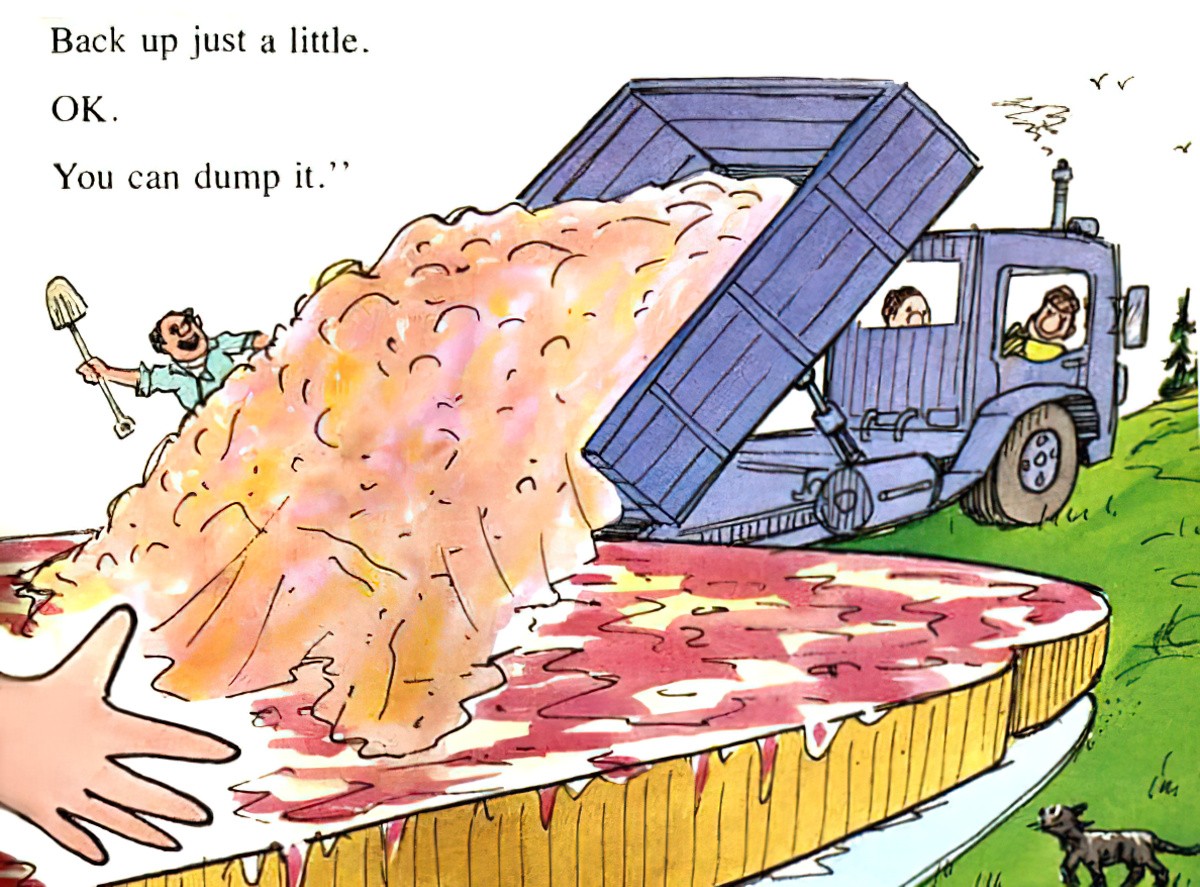
For a more contemporary comparison, this time about an enormous teddy bear, see Jez Alborough:
Another book (in French) about an animal in Paris. Perhaps because Paris is known for being the city for lovers, it’s particularly incongruous and humorous to see an animal do the tourist thing there.
SEE ALSO
Back in 2011 a study was released which showed that boys were almost twice as likely to appear in children’s books as girls. The ABC (Australian) produced a radio piece on this and interviewed a local author, who happened to be Leigh Hobbs. Leigh Hobbs says something like, “I hate this kind of crap.” Meaning, people whinging about diversity. He then went on to say that for his books, at least, the gender was even. If you listen to the piece all the way through, you’ll find the journalists did a count up of Leigh Hobbs’ books and found that his books are gender imbalanced in typical fashion.
I wonder if Leigh Hobbs has changed his mind after listening to the radio piece. I’d love to know if he has, because every time I look at this book, which my daughter really loves, I’m reminded of his radio splutter, and few things annoy me more than white men who simply won’t acknowledge that the space that white men occupy in the world is indeed disproportionate.
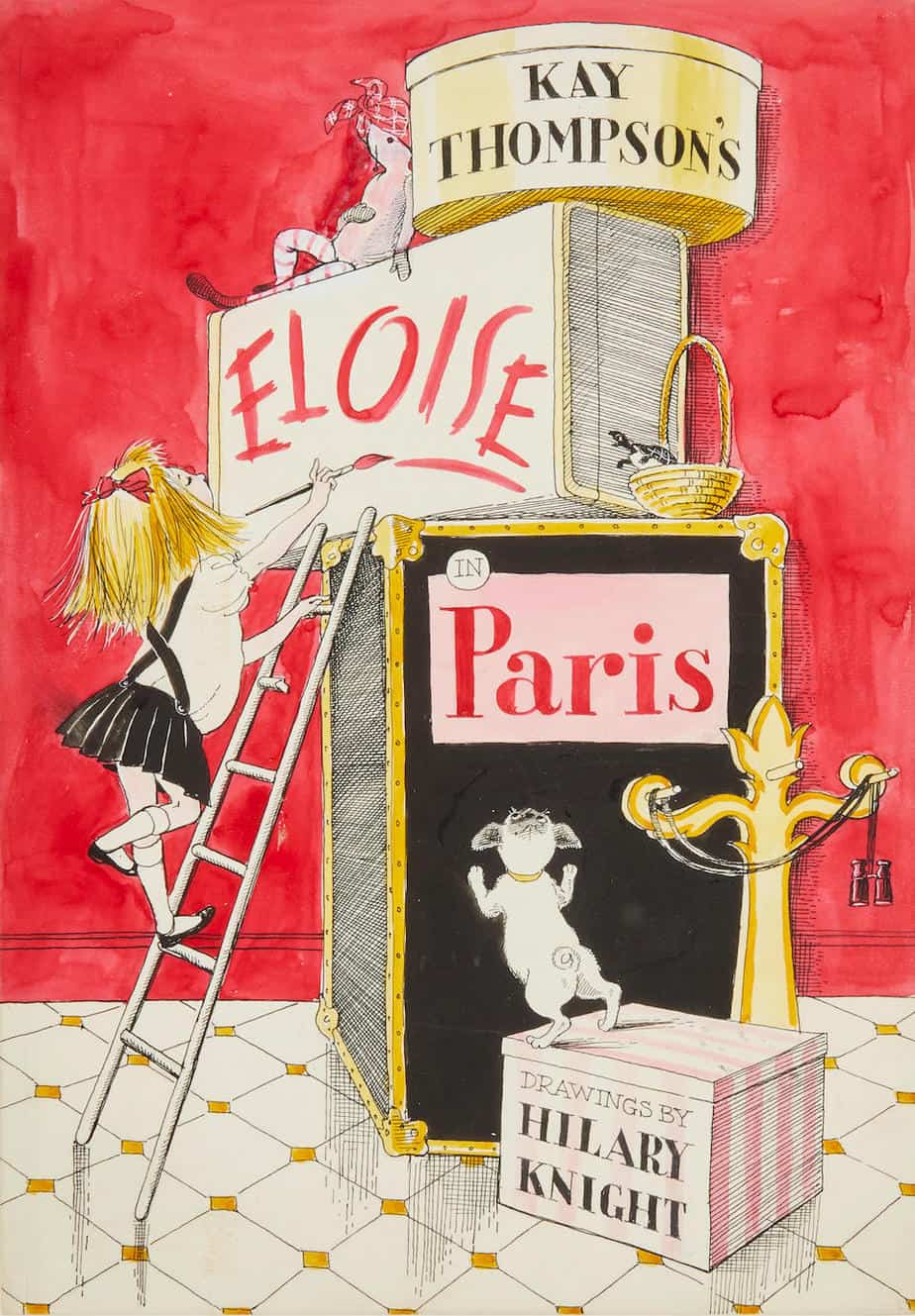
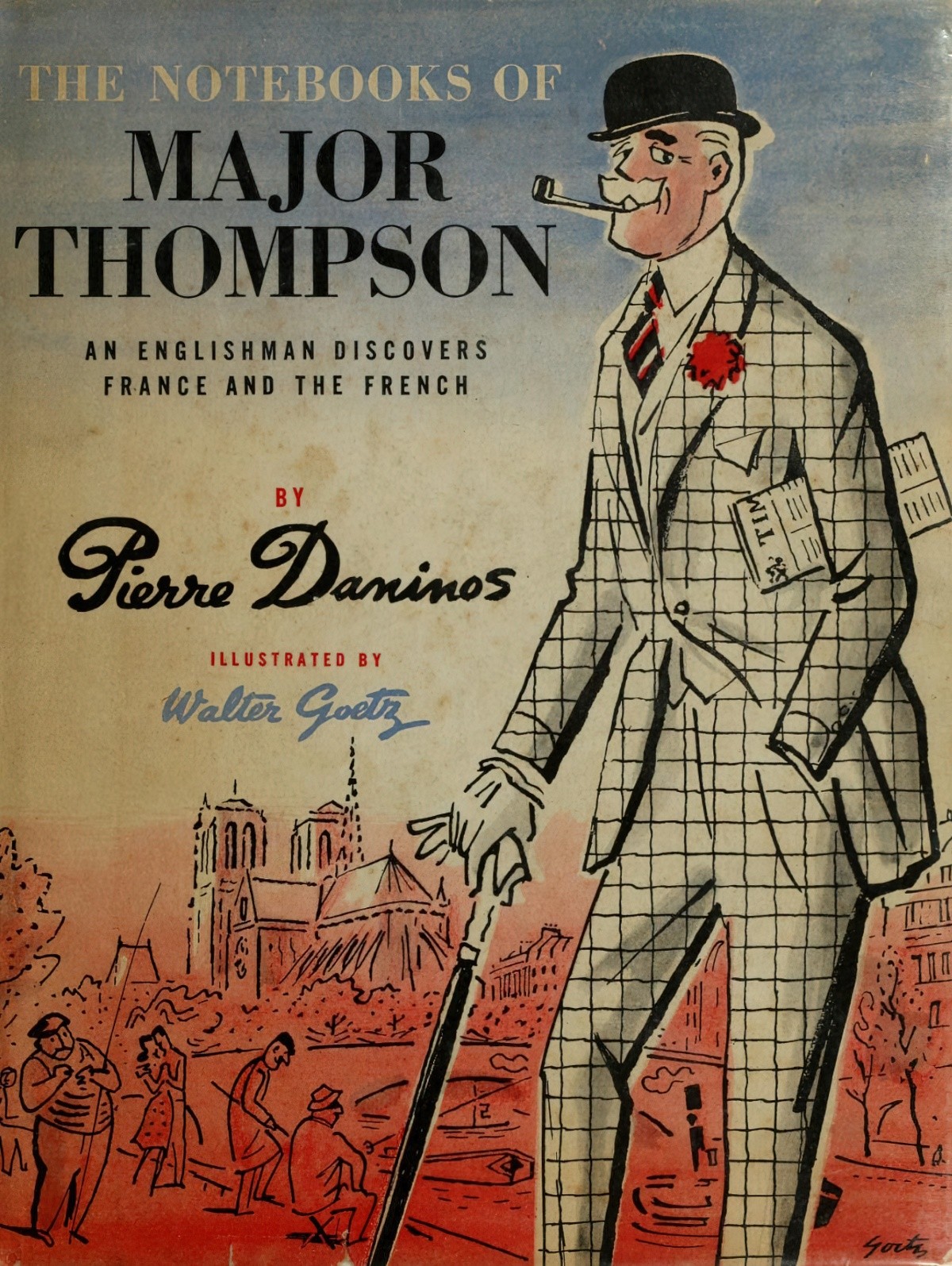
Mr Chicken Lands On London was released in 2014, currently available in hardback.
